Abstract
A total of 391 male employees in a Swedish pulp and paper company were followed up for 22 years. As a part of a health examination in 1961 back pain reported by the subjects and abnormalities of the back as judged by the physicians were investigated with respect to predictive power regarding sick leave, early retirement, unemployment, labour turnover, and mortality during the follow up period. Univariate analysis showed that abnormalities of the back were better than back pain for predicting early retirement. Neither back pain nor back abnormalities had any predictive power with respect to long term sick leave, labour turnover, or mortality. Multivariate analyses of 26 variables were performed. Both self assessment of general health and back abnormalities were predictive for early retirement with a diagnosis of back disorder on the retirement certificate but self assessed health was a stronger predictor. Age, smoking, and neuroticism were predictors regarding early retirement for all diagnoses. Education had a negative association; neuroticism did not predict early retirement with a diagnosis of back disorder.
Full text
PDF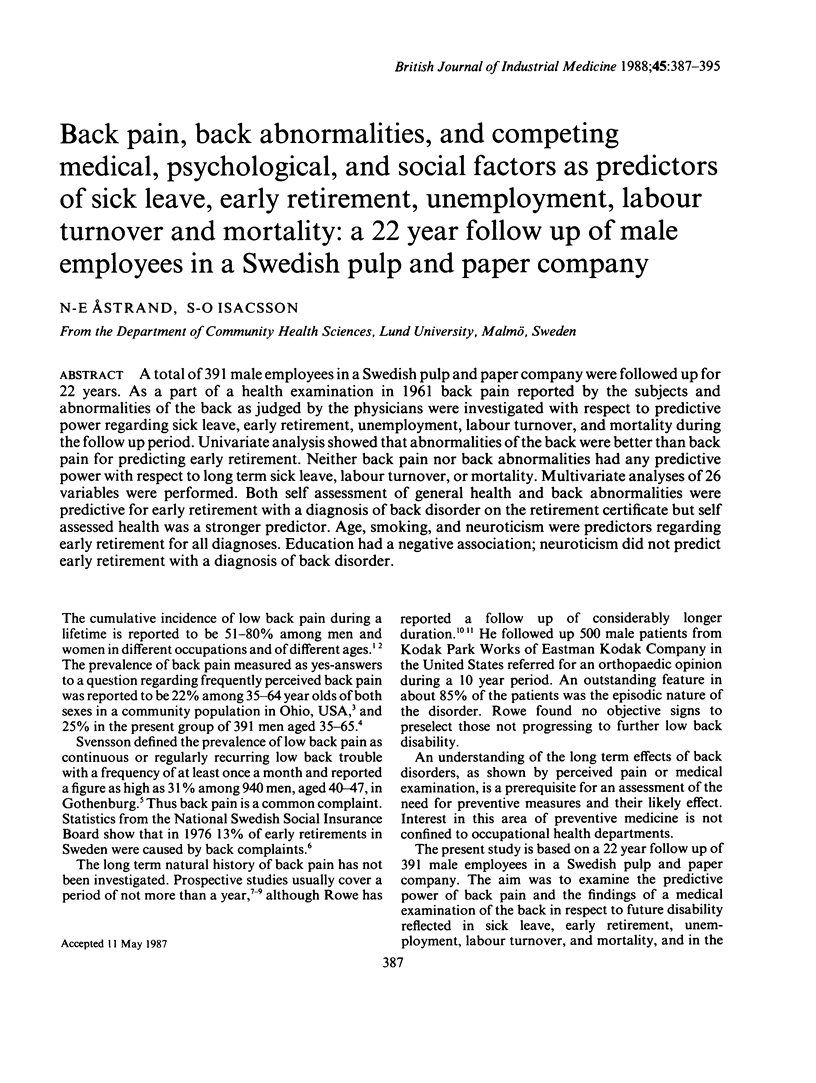
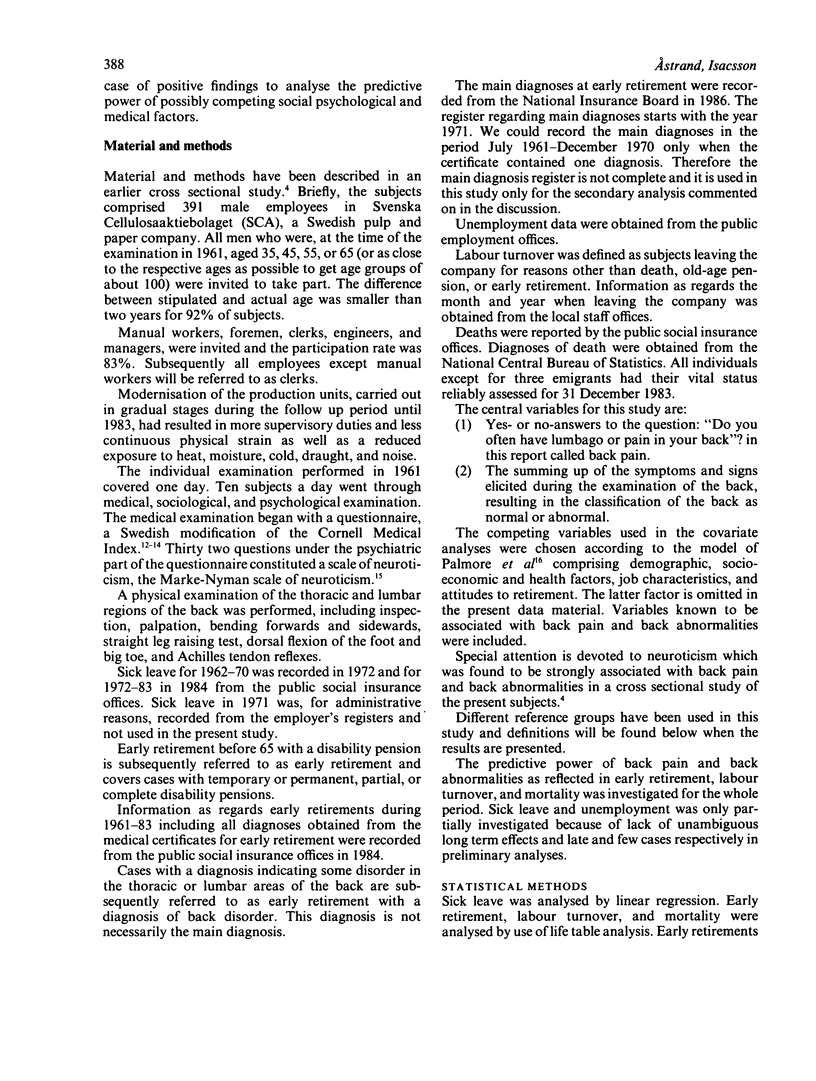
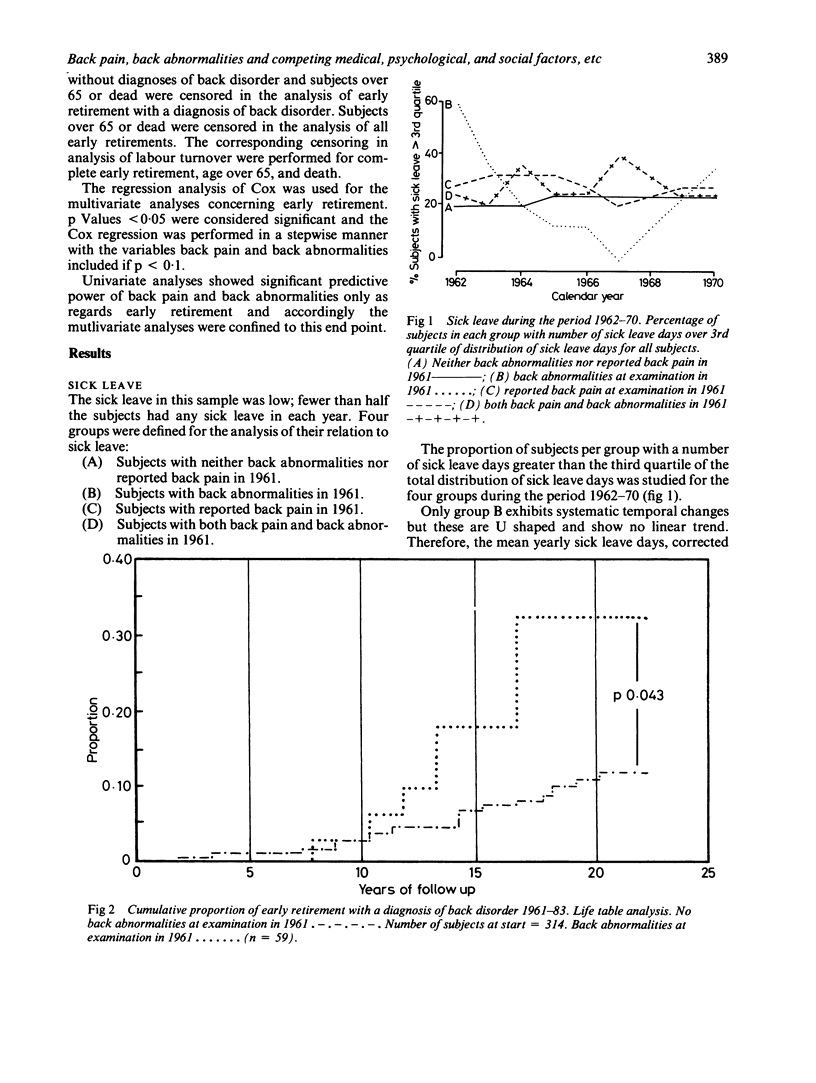
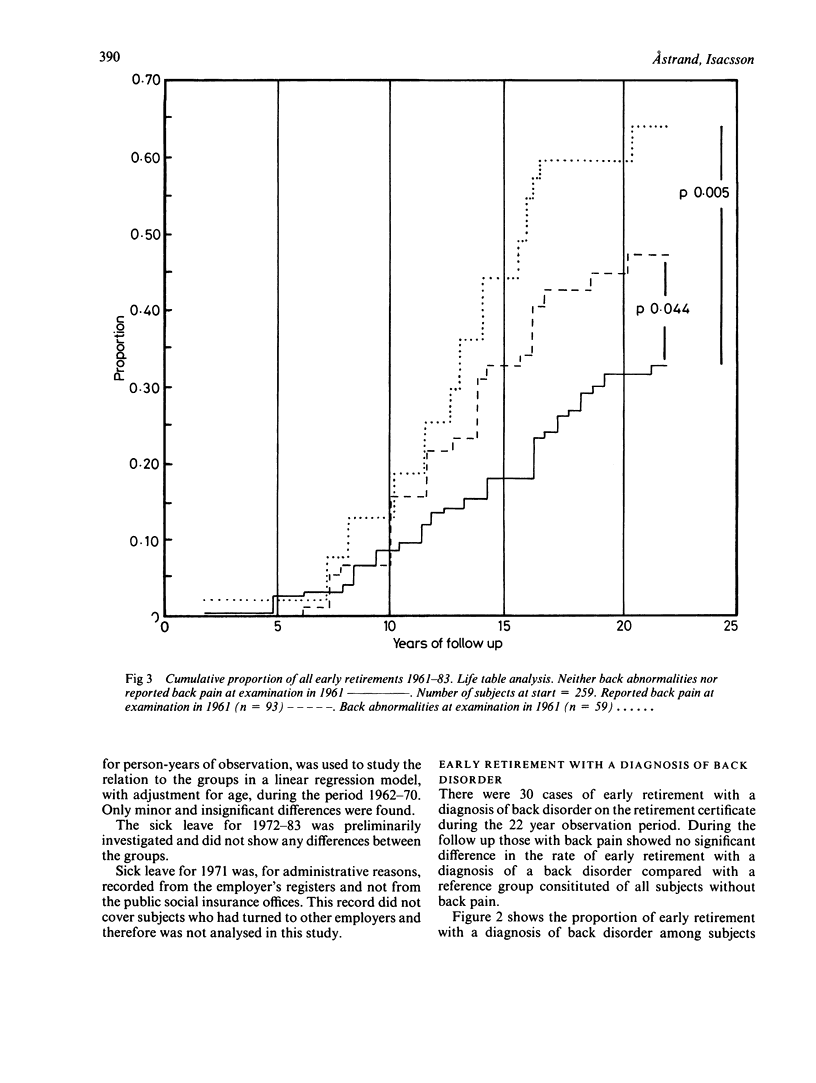
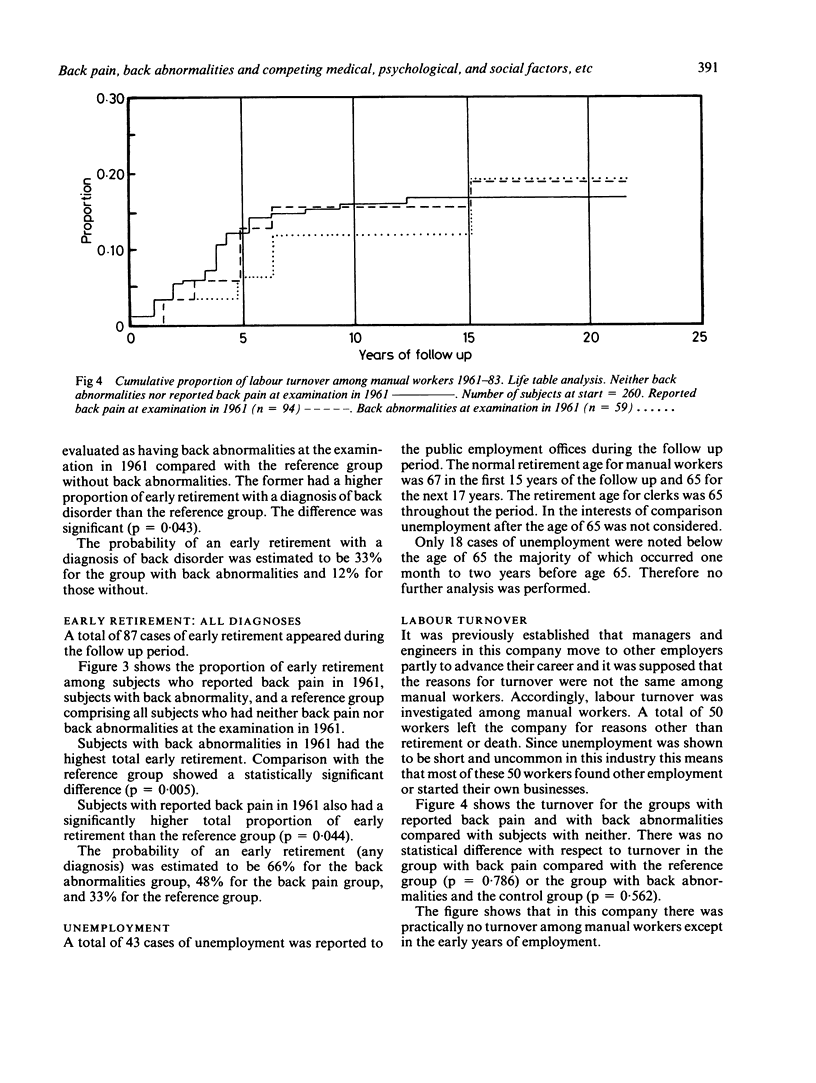
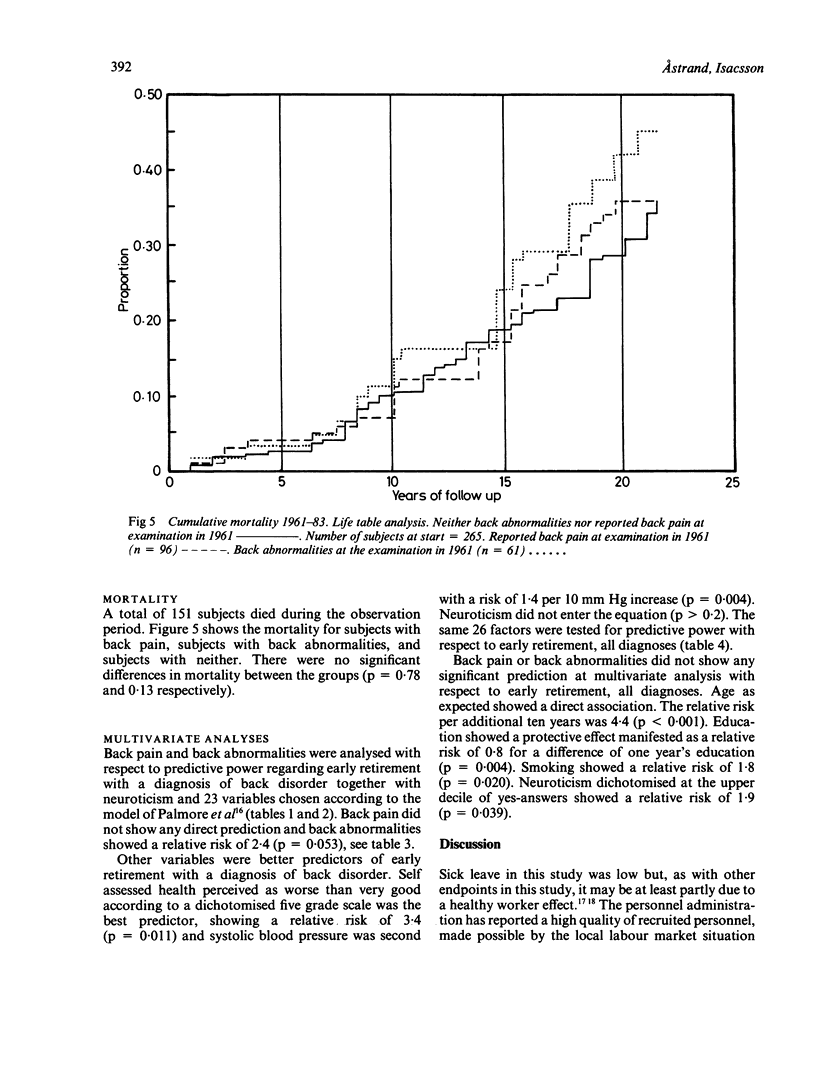


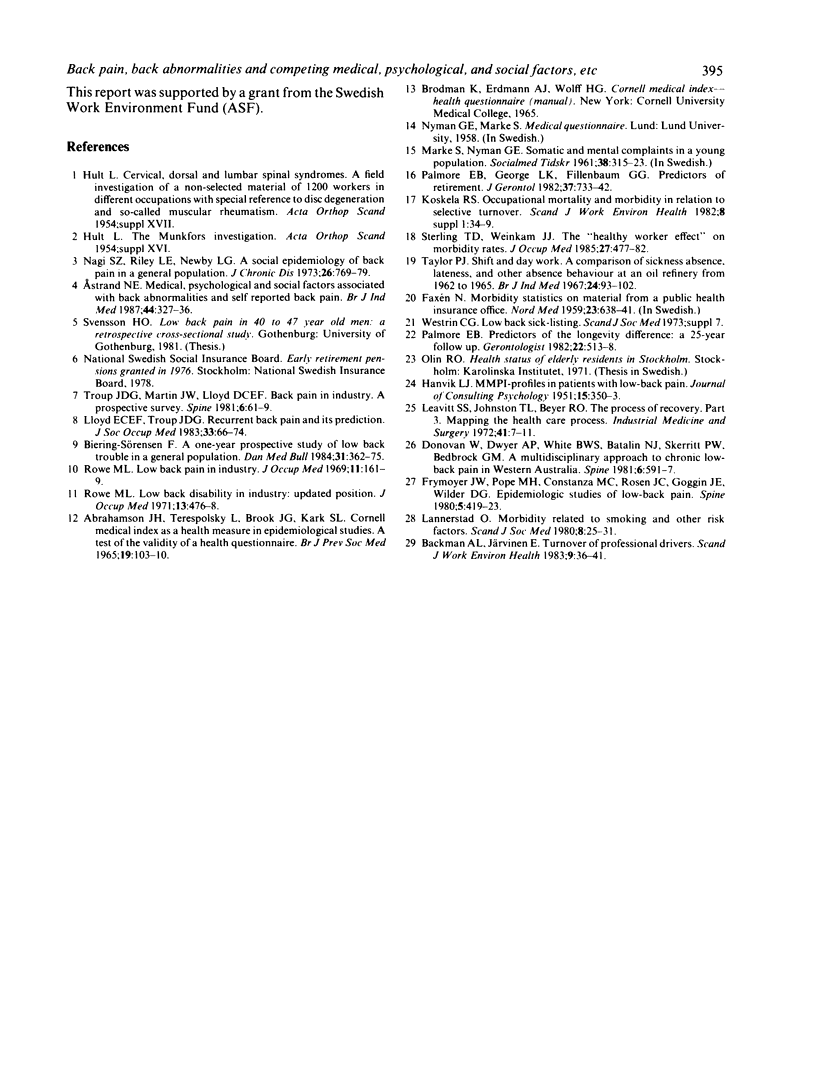
Selected References
These references are in PubMed. This may not be the complete list of references from this article.
- Abramson J. H., Terespolsky L., Brook J. G., Kark S. L. Cornell Medical Index as a health measure in epidemiological studies. A test of the validity of a health questionnaire. Br J Prev Soc Med. 1965 Jul;19(3):103–110. doi: 10.1136/jech.19.3.103. [DOI] [PMC free article] [PubMed] [Google Scholar]
- Astrand N. E. Medical, psychological, and social factors associated with back abnormalities and self reported back pain: a cross sectional study of male employees in a Swedish pulp and paper industry. Br J Ind Med. 1987 May;44(5):327–336. doi: 10.1136/oem.44.5.327. [DOI] [PMC free article] [PubMed] [Google Scholar]
- Backman A. L., Järvinen E. Turnover of professional drivers. Scand J Work Environ Health. 1983 Feb;9(1):36–41. doi: 10.5271/sjweh.2445. [DOI] [PubMed] [Google Scholar]
- Biering-Sørensen F. A one-year prospective study of low back trouble in a general population. The prognostic value of low back history and physical measurements. Dan Med Bull. 1984 Oct;31(5):362–375. [PubMed] [Google Scholar]
- FAXEN N. Morbiditetsstastistik pá sjukkassematerial. Nord Med. 1959 Mar 23;61(17):638–641. [PubMed] [Google Scholar]
- Frymoyer J. W., Pope M. H., Costanza M. C., Rosen J. C., Goggin J. E., Wilder D. G. Epidemiologic studies of low-back pain. Spine (Phila Pa 1976) 1980 Sep-Oct;5(5):419–423. doi: 10.1097/00007632-198009000-00005. [DOI] [PubMed] [Google Scholar]
- HANVIK L. J. MMPI profiles in patients with low-back pain. J Consult Psychol. 1951 Aug;15(4):350–353. doi: 10.1037/h0058656. [DOI] [PubMed] [Google Scholar]
- Lannerstad O. Morbidity related to smoking and other risk factors. A population study of disability pension, hospital care and sickness benefit days among middle-aged men in Malmö, Sweden. Scand J Soc Med. 1980;8(1):25–31. doi: 10.1177/140349488000800104. [DOI] [PubMed] [Google Scholar]
- Leavitt S. S., Johnston T. L., Beyer R. D. The process of recovery: patterns in industrial back injury. 3. Mapping the health care process. IMS Ind Med Surg. 1972 Jan;41(1):7–11. [PubMed] [Google Scholar]
- Lloyd D. C., Troup J. D. Recurrent back pain and its prediction. J Soc Occup Med. 1983 Apr;33(2):66–74. doi: 10.1093/occmed/33.2.66. [DOI] [PubMed] [Google Scholar]
- MARKE S., NYMAN G. E. [Somatic and mental complaints in a group of normal young persons. Analysis of a medical survey]. Soc Med Tidskr. 1961 Oct;38:315–323. [PubMed] [Google Scholar]
- Palmore E. B., George L. K., Fillenbaum G. G. Predictors of retirement. J Gerontol. 1982 Nov;37(6):733–742. doi: 10.1093/geronj/37.6.733. [DOI] [PubMed] [Google Scholar]
- Palmore E. B. Predictors of the longevity difference: a 25-year follow-up. Gerontologist. 1982 Dec;22(6):513–518. doi: 10.1093/geront/22.6.513. [DOI] [PubMed] [Google Scholar]
- Rowe M. L. Low back pain in industry. A position paper. J Occup Med. 1969 Apr;11(4):161–169. doi: 10.1097/00043764-196904000-00001. [DOI] [PubMed] [Google Scholar]
- Sterling T. D., Weinkam J. J. The 'healthy worker effect' on morbidity rates. J Occup Med. 1985 Jul;27(7):477–482. [PubMed] [Google Scholar]
- Taylor P. J. Shift and day work. A comparison of sickness absence, lateness, and other absence behaviour at an oil refinery from 1962 to 1965. Br J Ind Med. 1967 Apr;24(2):93–102. doi: 10.1136/oem.24.2.93. [DOI] [PMC free article] [PubMed] [Google Scholar]


